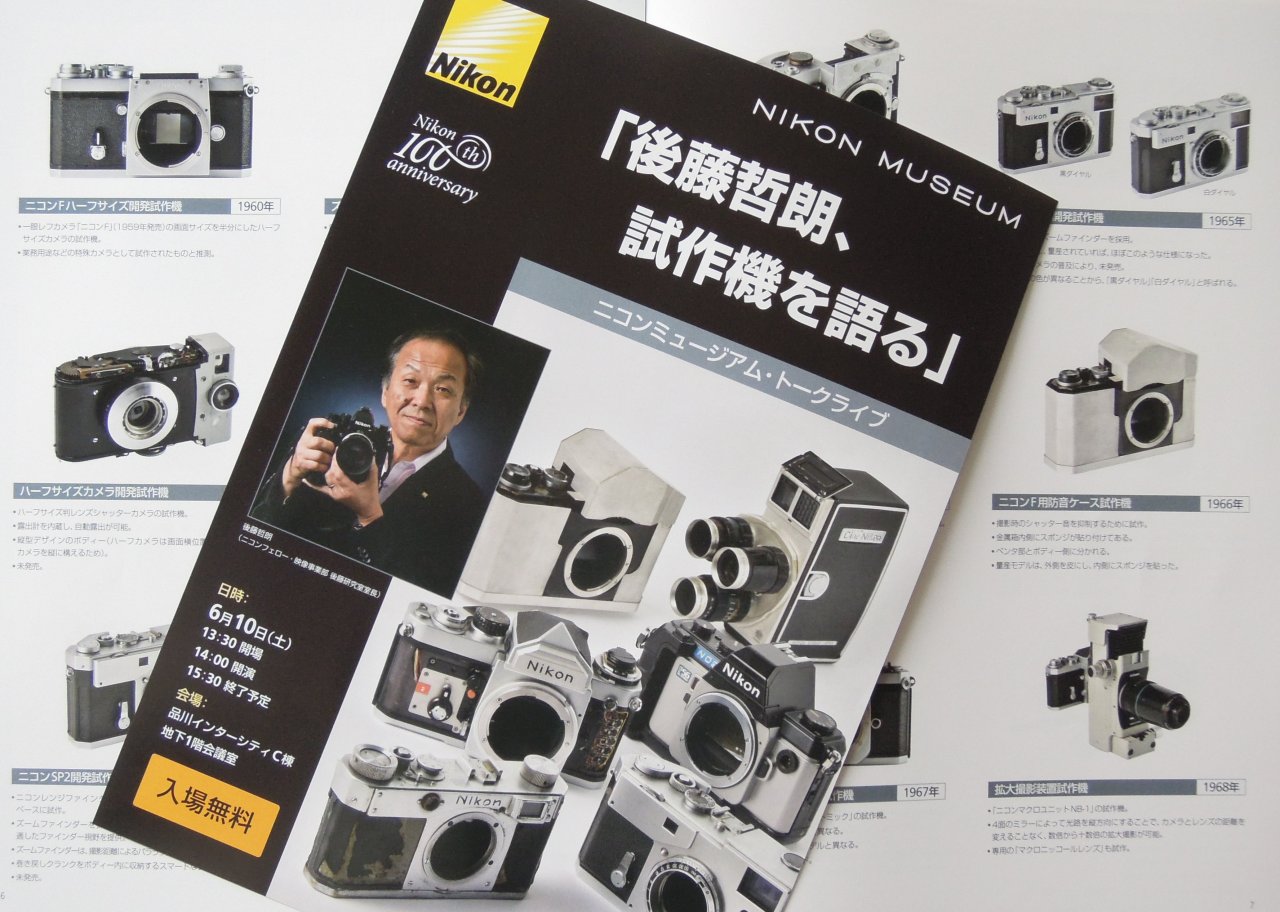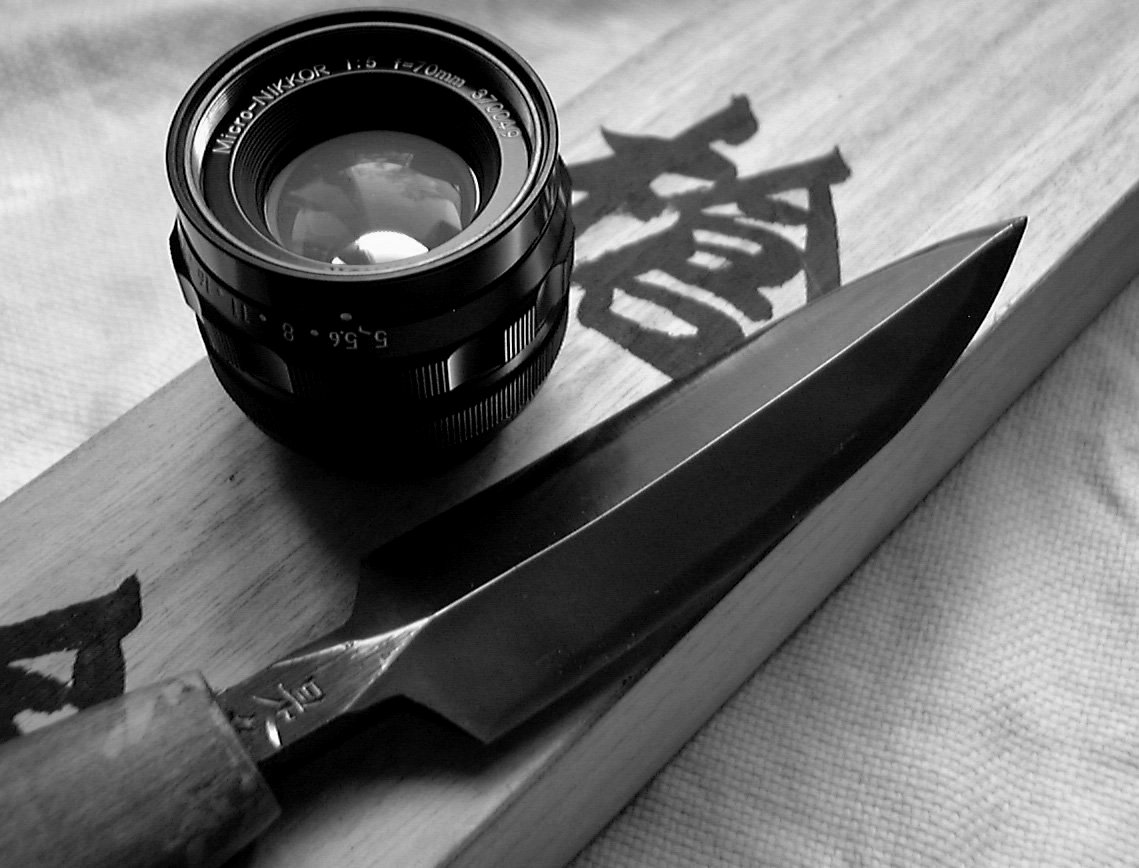
Professor Dr. Kazuo Koga's Micro Nikkor 70mm F5 and his Old Collection
2017 Nikon Museum It is a story of the summer of 2017. Saturday in July of 2017, the lecture presentation of Mr. Tetsuro Goto was held at the Nikon museum Tokyo. Mr. Goto explained Nikon's prototype in detail. Many Nikon enthusiast gathered and got excited fun. Dr. Kazuo Koga who I respect also participated in a lecture at the Nikon museum. We talked about the past. It was a very good time.

Nikon Museum, Shinagawa Tokyo, 2017 Tetsuro Goto Lecture Presentation, Prototype Nikon Professor Dr. Koga and me Well, the story goes back to 2002. I began to talk with Professor Dr. Kazuo Koga by the industrial Nikkor lenses. At that time, Professor Koga was studying human eye movement at Research Institute of Environmental Medicine, Nagoya University.
I got inquiries about the Micro Nikkor 70mm F5 lens from him
and I sent the lens specifications document to him.
I posted his research on the RED BOOK NIKKOR site as
"Professor K's Micro Nikkor 70mm F5" in September 2002.
The following is a book titled "The Eye Movement Reserch Handbook"
that I got from him for reference at that time.
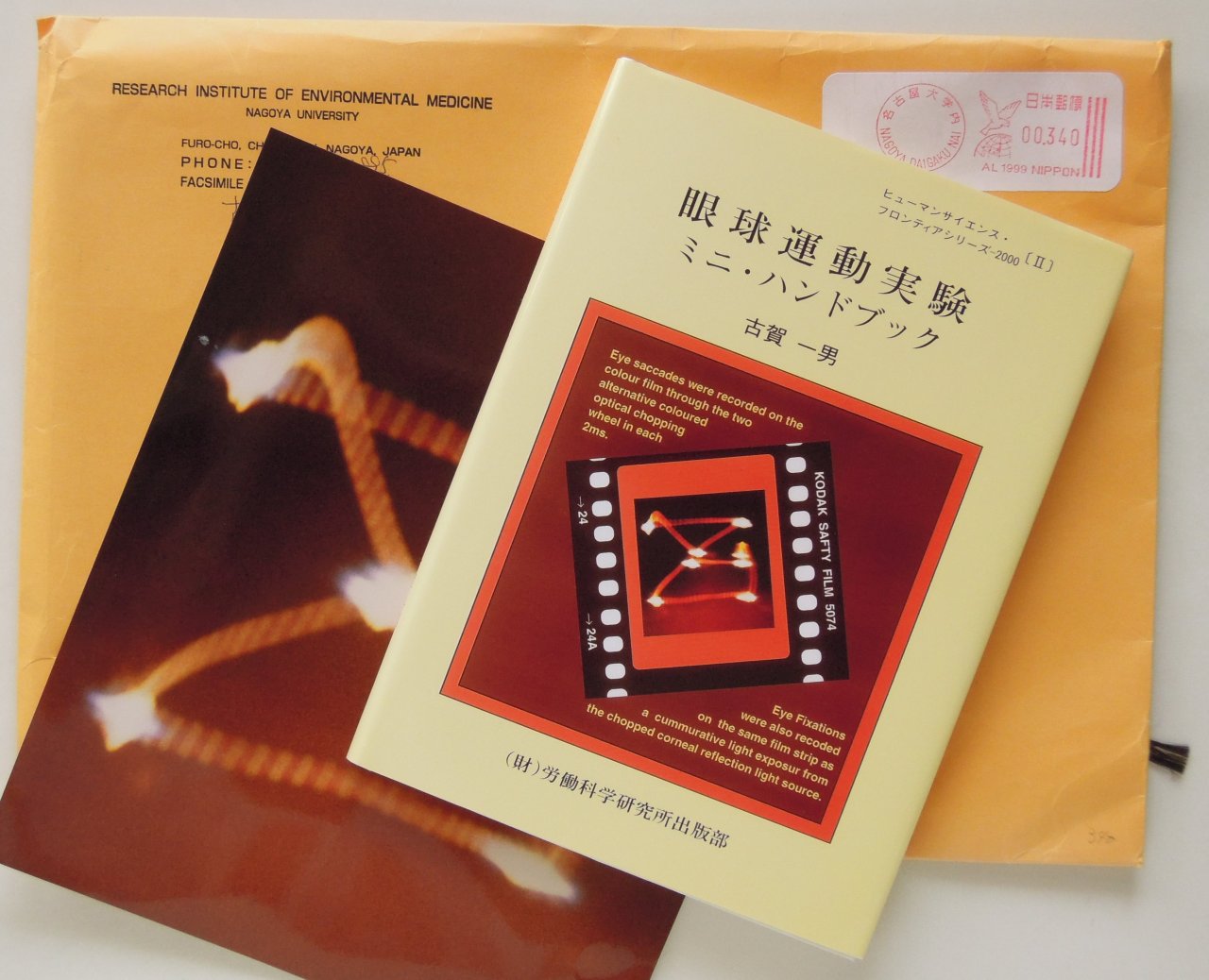
The Eye Movement Reserch Handbook, Kazuo Koga, 1998 2011 Summer At that time, Professor Dr. Kazuo Koga was studying human eye movement at EcoTopia Science Institute, Nagoya University. He published a book titled "Unmasked Perception". This book is very interesting and exciting. An exhilarating feeling that runs all the way from medical science and engineering to art. I cannot stop this book when I read it.
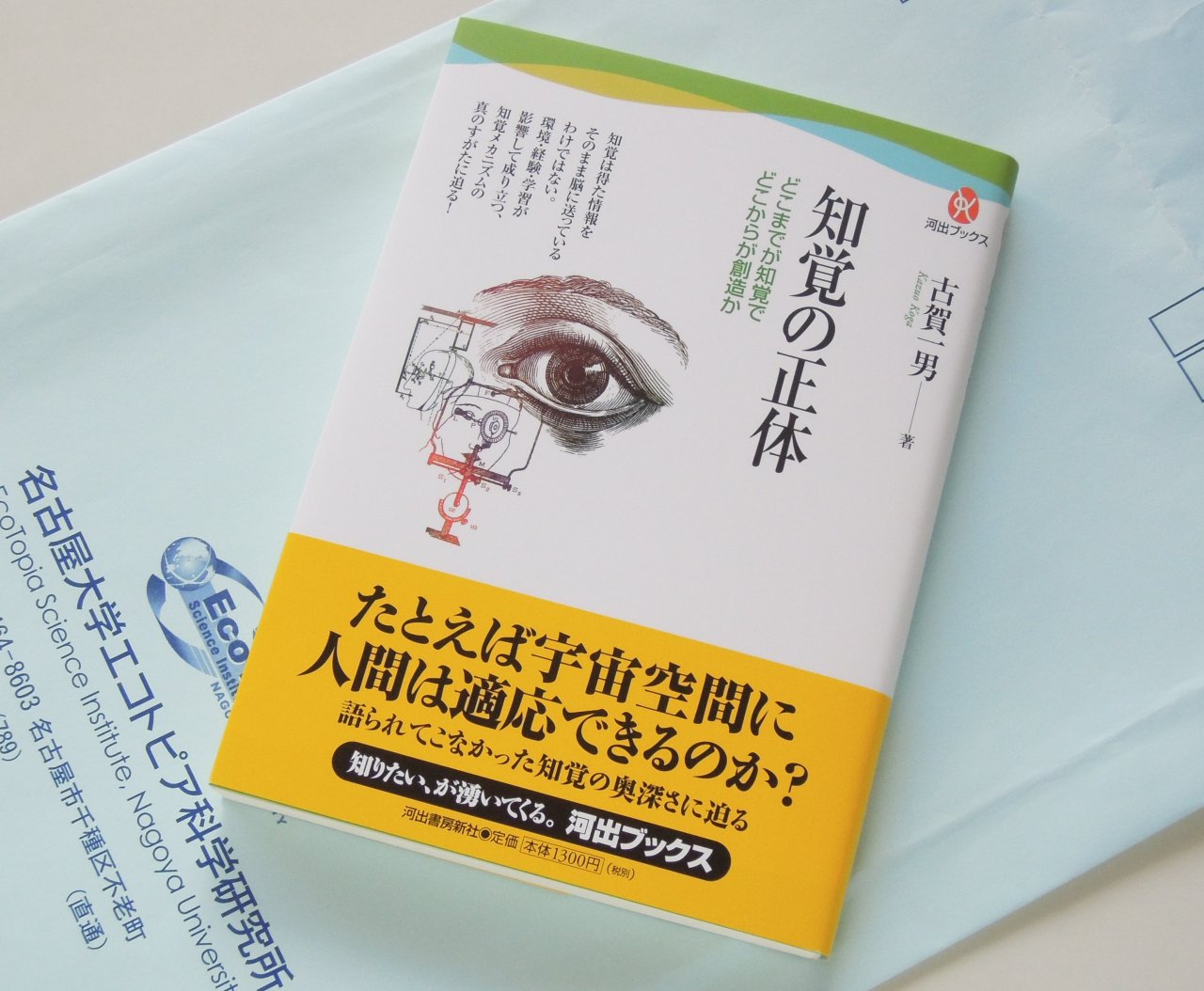
Unmasked Perception, Kazuo Koga, 2011 2017 Summer In the summer of 2017, collaborative research with Professor Dr. Koga resumed. I asked him about the experimental system. After a while, he taught me about his experimental system. I revised the article I wrote 15 years ago with the help of him.

Professor Dr. Kazuo Koga's Micro Nikkor 70mm F5 and his Old Collection
Medical Science Professor Dr. Kazuo Koga Selects Micro Nikkor 70mm F5 Professor Dr. Kazuo Koga is researching the medical science in Nagoya University. To observe human eye movement, he is developing a very highly accurate experiment equipment by himself. He needed an efficient super macro lens to install in the experiment equipment. Dr. Koga selects Micro Nikkor 70mm F5 for his mission critical medical research. Yes, it is lenses produced 30 years ago. Specifications Micro Nikkor 70mm F5
Focal length : 70 mm
Release date : 1969

Micro Nikkor 70mm F5 Lens Construction

Micro Nikkor 70mm F5 Lens Construction New Explanation in 2017 Below is the explanation about experimental system received from Dr. Koga. ------------- Entire blueprint and legend for the system of corneal reflection method including the explanation of Micro NIKKOR 70mm F5 are complicated so that I will try to explain the part of optical system briefly.
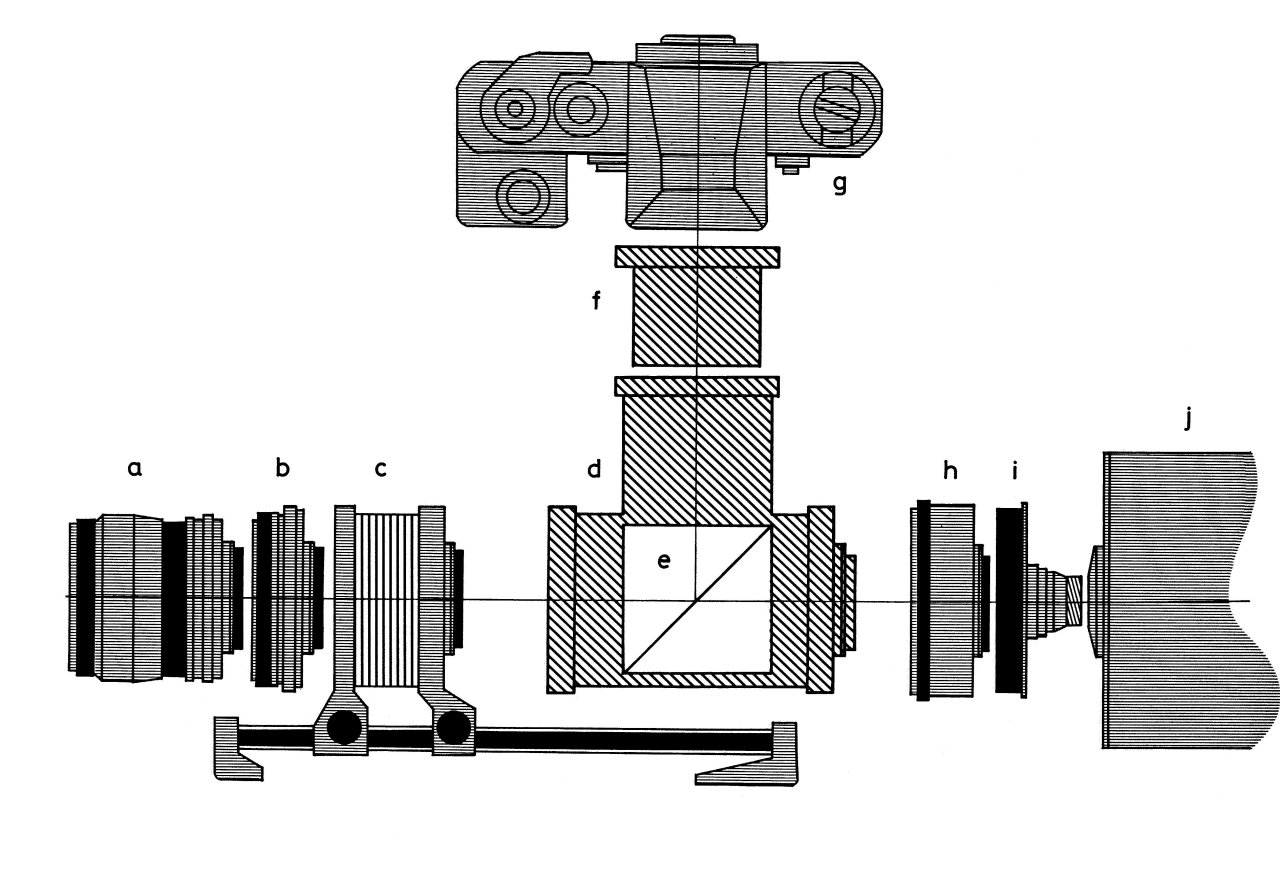
Optical system for recording corneal reflection light method used by Dr. Koga
There were several research contingent demands to be satisfied. The lens had to have both of long working distance and higher magnification which was almost similar as the microscope with low-magnification objectives. The optical system used here had to have at least 15cm working distance between the surface of cornea and the top of lens. Simultaneously the optical system should have 50 to 70 magnifications. There are a lot of high magnification objectives for the microscopes, but they have extremely short working distance, for instance oil immersion objective is good example. However, the devices used for the human subject to get the data under the nearly similar daily life environment. It needed to avoid the fear or uncomfortable objects in front of eyes. In particular the experiments for the infants and small children it is mandatory not to give them such an unpleasant situation otherwise no natural eye movement might be recorded.
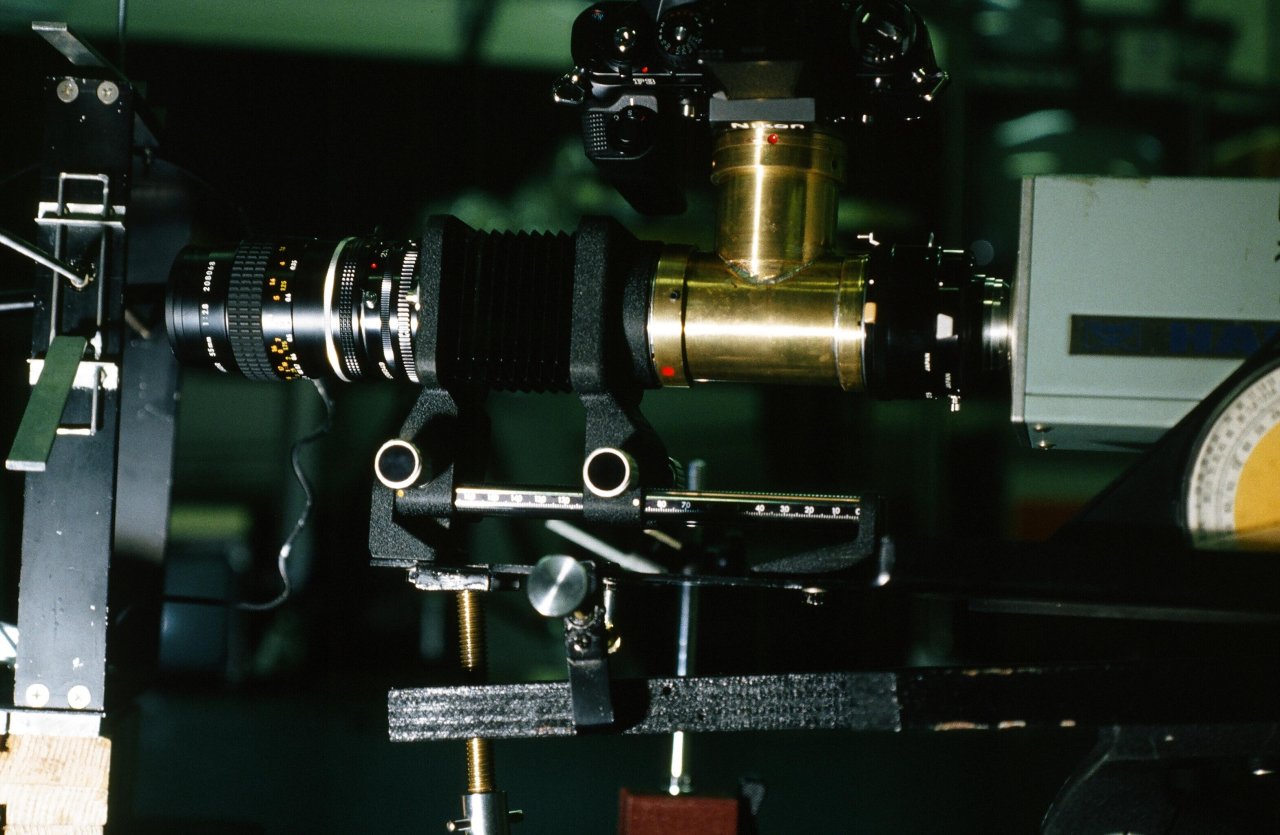
Beam Splitter
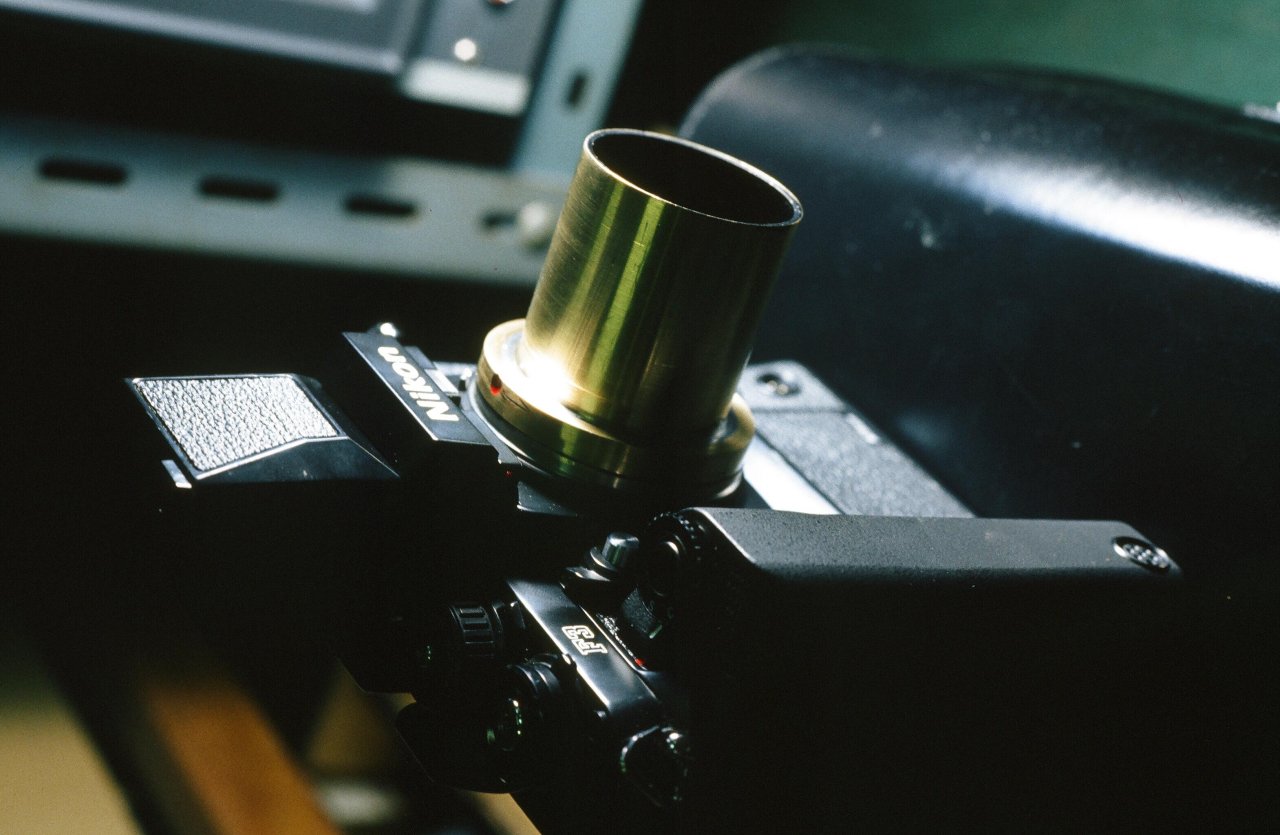
Beam Splitter on Nikon F3
Another difficulty to get the corneal reflection image in the finder screen when used the higher magnification objects. To ease to get the highly magnified image in short time during the experiments I adopt the turret for two normal camera lenses, one is high magnification and the other one is low magnification lens to cover wider area around the human eye. Once caught the corneal reflection image in the center of frame, immediately I could change to high magnification object on the turret. Final device I should prepare was T-shaped prism house been installed the beam-splitter inside to divide the optical pathway both for the still camera and XY-tracker sensitive for the near IR. It was hard work to joint two different size of brass pipe to make beam splitter house by hand. 3D printer can make it more precisely but there was no such a high-tech output devices. Dot matrix printer was popular at that time.
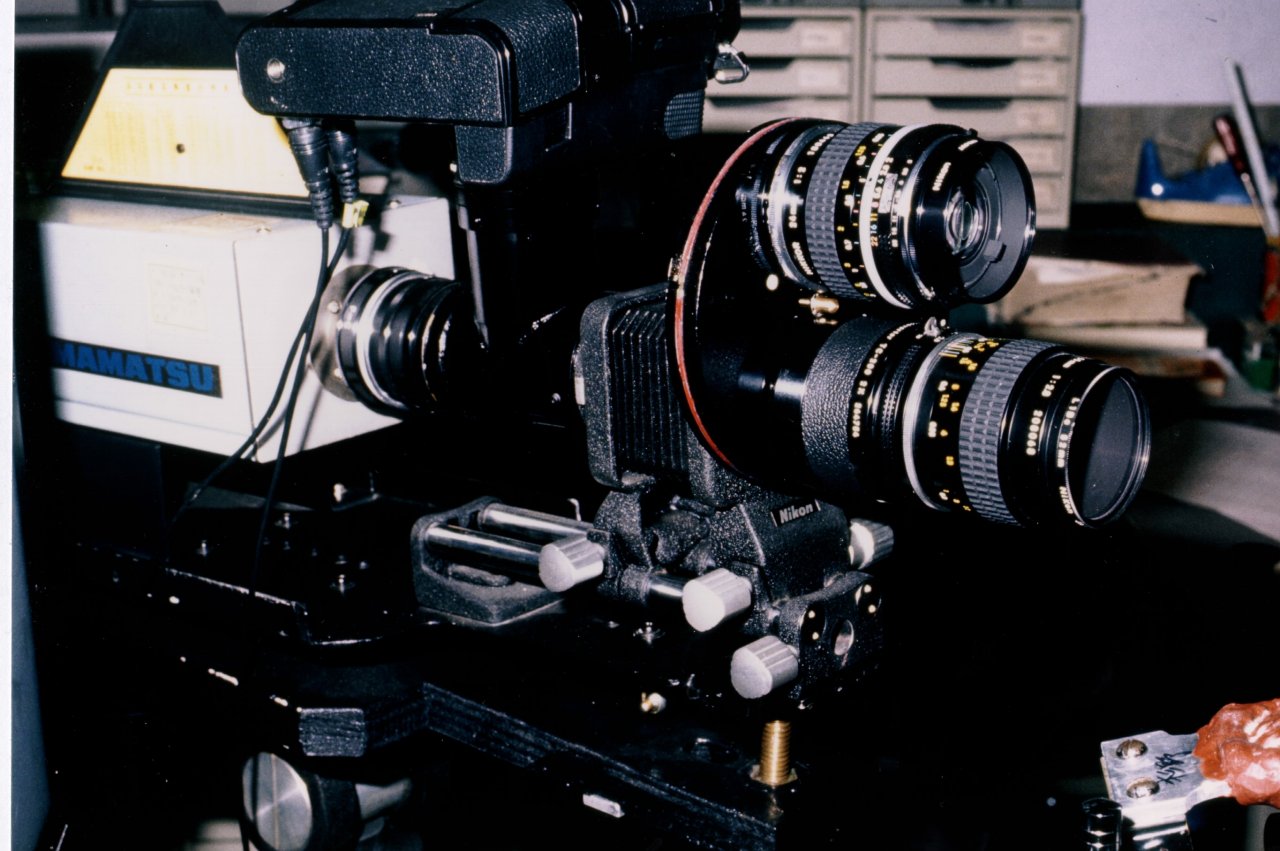
Fully Equipped Video Camera

Turret for Two Lenses
In order to put the high magnification optical system into practice wide NIKKOR 24mm F2.8 was used in reverse with the extension tube and 2X teleconverter attached to the bellows. Micro-NIKKOR 70mm F5 was used one of the low magnification object lens on the turret. Brass metal was used to manufacture the parts by my own on the lathe. Optical bench, laser pointer and grass pipe were used to get exact positioning for the taps and dies. A large amount of defective trial products were seen in the garbage. After satisfactory trail was completed on the desk I moved to the fridge next to the workshop and had a glass of Chardonnay. Several pictures were shown here. Why Film Camera At the end of summary explanation for my own research activity I would like to show short message why I tried to develop such an old fashion style of measuring devices by my own effort. Someone may claim me it is my own hobby, another one ignores me that it was old fashioned nostalgic preference and so on. I do not think so. It has been common that the hybrid technology broke through the difficulty of the matter for the premature technology and invent or create good solution for the cutting-edge idea in next forthcoming age. When I was engaging to develop the digital recording system for the human precise behavior such as eye movements, still old-fashioned analogue devices were dominant. XY-tracker developed by Hamamatsu Photonics was one of the most powerful tool to proceed digital measurements in my research area. However, the time sampling was so slow which was 16.7 milliseconds (60 Hz) at that time. Eye movement is much faster than any other human behaviors and not enough to satisfy my intention. I tried to introduce dual hybrid recording systems both by traditional eye movement recording way but introducing optical chopper wheel to change the color of corneal reflection image by white and red in each 1/1000 seconds with simultaneous recording of digital system having 16.7 milliseconds (60 Hz sampling time). Lower two figures show both results by the hybrid recording system above mentioned.
Prof. Dr. Kazuo Koga
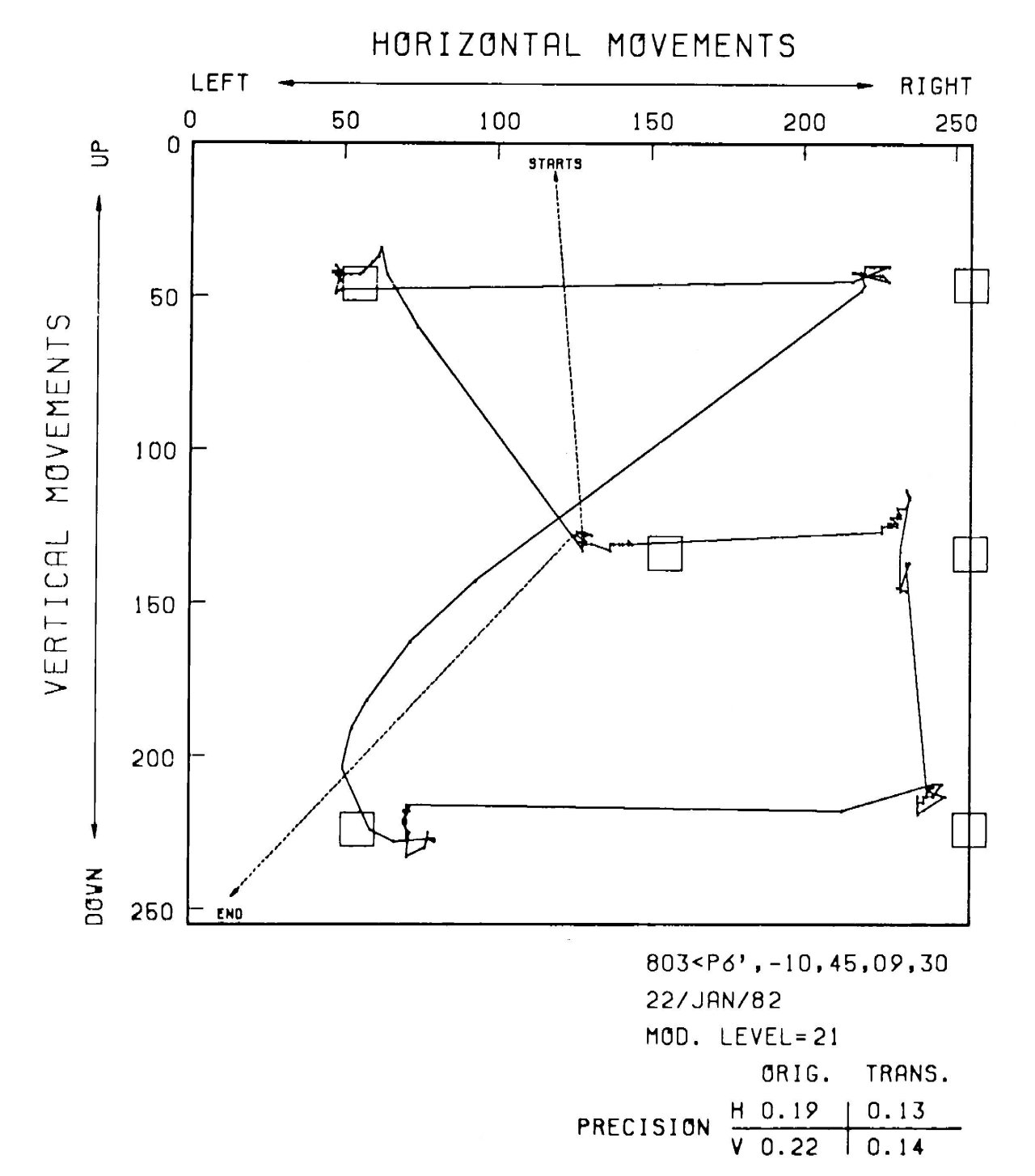
Eye Movement 2D Digital Output
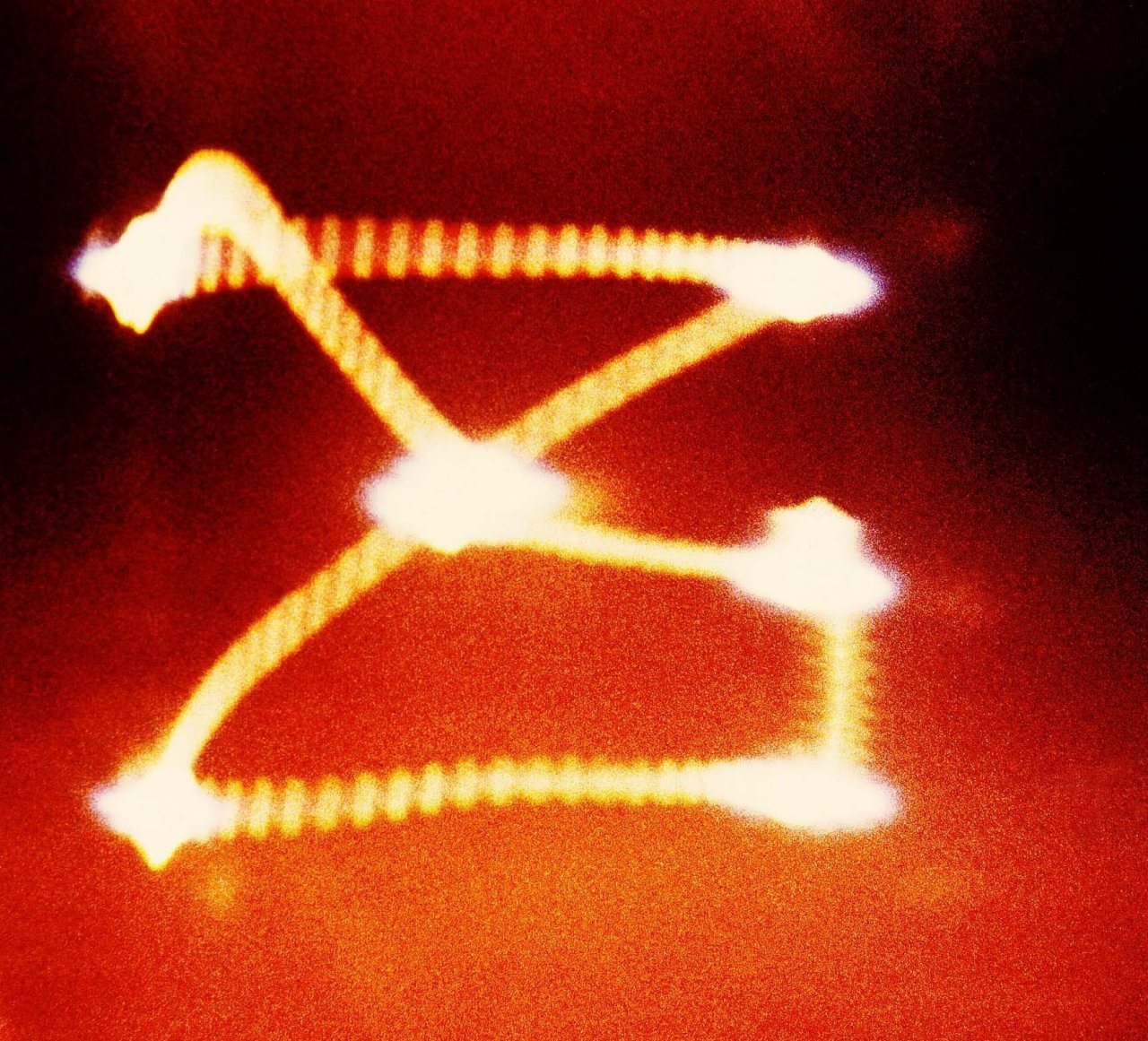
Still Photo with Optical Chopper
Very Old Collection Professor Dr. Kazuo Koga has a unique hobby. He is a collector of the old planes and chisels. Those plane and chisel are carpenter's tools. He is collecting very old tools. A very old kind of plane is taken of a picture to the photograph above. It is not a knife but a plane. The lens, Micro Nikkor 70mm F5 has "Akane-Red" coating. "Akane-Red", Madder Red is very old, red Japan color. You can see red color 1000 years ago with this wonderful macro lens.
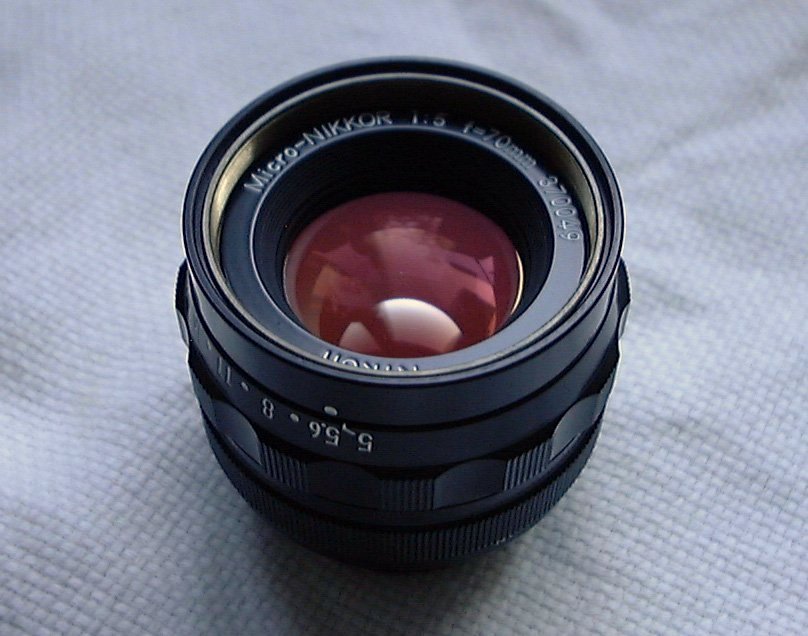
Akane-Red Coating Beauty of Micro Nikkor 70mm F5
Copyright Michio Akiyama, Tokyo Japan 2002, 2022
|
